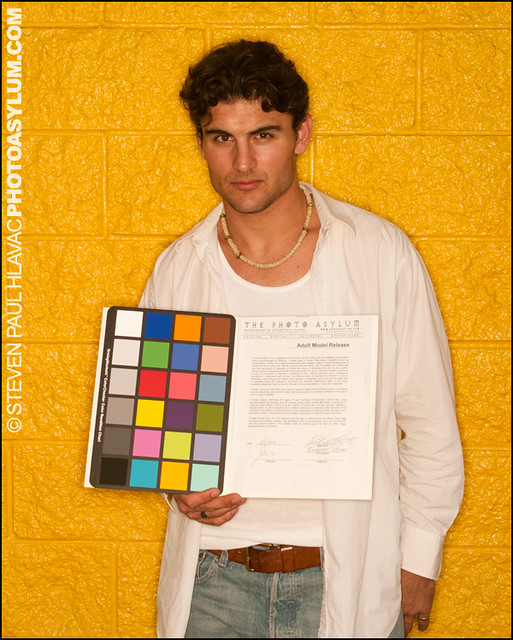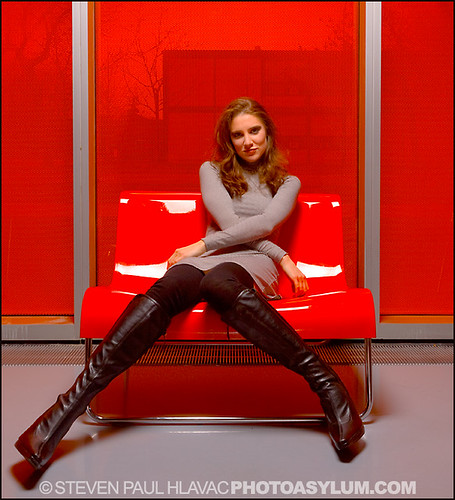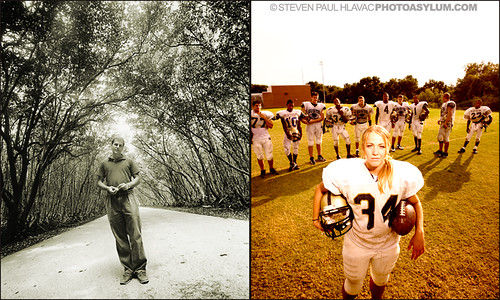As I look at much of the fashion photography being posted online by younger shooters (and this is mostly
self-publishing, not actual magazines), I'm a bit stunned by the number you that don't seem to have a firm grasp on the fine (and I have to assume
elusive) art of cropping an image.
As a photographer, you have
three opportunities to crop a photo. Once when you compose in the camera. Again when you crop making the print in either a wet darkroom or on a computer. And finally when you present a printed photo by trimming and/or window matting it.
Now, in a sense,
composing and
cropping an image go hand in hand, as they are essentially the same thing. By cropping, you are altering the composition of your shot. Obviously, the nice thing about cropping is you can do it
after the fact, often correcting mistakes or making the composition of a pic stronger after you've had time to look at and think about it.
And much like the art of composition, the full art of cropping is way too encompassing to get into here. So I'll simply deal with one small aspect. One tiny, yet
incredibly annoying aspect of cropping fashion photos that I spot with disturbing regularity: cutting off your model's hands at the wrists or feet at the ankles.
Now, let me be clear: you have the right to pose your model, then compose your frame
and eventually crop your shot in any way, shape, or form that you see fit. Far be it from me to tell you how to create your own art.
But I see things through the eyes of someone who's shot editorial and advertising work for a lot of publications, and worked with many
Editors and
Art Directors over the years. To have your work accepted and respected in a larger and much more critical world, you can't just have a free-for-all going on in your photo.
Random doesn't usually work. The way you crop is critical to whether the image is successful or not, and in the commercial world, other people's opinions do count.
Think of it like this: you can drive your car like a madman in your own back yard to your heart's content, but at some point, if you decide to venture out onto the street in the
real world, you need to know the
"rules of the road", because they do exist.
So, with that in mind, let me start by saying arms and legs at the edge of a frame with either the hands cut off at the wrists or feet cut off at the ankles tends to look
really bad.
Really. Bad. Whether
you realize it or not...
So, assuming you do not want a
full-length shot, where do you crop? Easy. You crop much further up the arms or legs. When you do that, it appears to the eye that those body parts are simply out of the frame. Nothing unusual.
On the other hand, when hands and feet are cropped at the wrists or ankles, it actually appears that those parts are
missing, and makes the overall composition look very awkward, or even freakish.
To our left here is a perfect example. Our beautiful model Lucy Marchany (agency: Wihelmina New York) has graciously volunteered to let me slice and dice her lower extremities at various spots in the interest of advancing cropping knowledge for all humanity. What a sport. In return, I promised to buy her new boots. I'm sure you can see the irony...
Now, the shot on the left is properly cropped. A symmetrical composition cut off just above the knees. It looks perfectly natural, what we would call a
three-quarter length shot. There is enough of her legs out of the frame that our eyes don't even think about it. They instead concentrate on the part of her that we
can see.
The pic on the left is poorly cropped. Lucy's legs lead the viewer's eyes all the way down to where her feet should be. And because of that,
you expect to see her feet. When you can't, it seems as though they've been removed. Taken away. Missing. It looks unsettling.
Here is an example of the wrong and right way to crop a model's hands in a shot. Poor Chevonne in the first pic looks like she was involved in some horrible industrial accident that lopped off her left hand. And she's
married no less. You can imagine her anguish. Russian beauty Svetlana on the right has her left arm flow smoothly out of the frame, the crop done much higher up the arm and at an angle.
Now, as much as I try to refrain from
pointing fingers at any specific individuals with these "lessons", I feel I have to mention a photographer whose online book I viewed recently. Not by name, of course...
They had many shots of extremely attractive models in some very good poses, but almost all of the pics have the poor girls' feet cut off. Yep, you guessed it:
at the ankles. It was so odd because it was done so consistently throughout their portfolio. As I've been saying, it would have been much better to either show the models' feet entirely, or crop much higher up on the legs.
What's even worse is many of the shots gave credit to a
Wardrobe Stylist, making it quite bizarre, as this stylist was either too lazy or didn't have the resources to pull
shoes for these shoots (shoes obviously being one of the most important styling elements of
any fashion shoot). Either that, or they simply didn't care that their hard work was eventually cropped out of the photos.
My point is even talented shooters can show they are completely clueless about certain things, and this obvious and easily fixed issue, IMO completely ruined their portfolio. Much like my initial reaction, an
Art Director or
Photo Editor would cringe viewing the work.
So class,
pay careful attention to your in-camera composing, and especially your post-process cropping. Let's either keep those hands and feet safely inside the frame, or crop them out the correct way...
All photos ©Steven Paul Hlavac.









